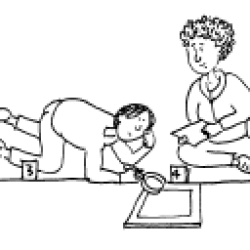Source Institutions
Source Institutions
Add to list Go to activity
Activity link broken? See if it's at the internet archive

In this activity (on pages 10-17), learners discover how scientists study biodiversity and the health of the environment based on inspection of small areas—a process known as sampling. Learners predict the living things they might find in a small area, then use a tool called a "linear transect," which is a line placed on the ground to measure the location and number of plants or animals in that area. Learners collect real data, compare their data to their predictions, and explore what their findings show about the biodiversity of their area. This activity could be used at a school site, a protected natural area, or even a back yard.
- 30 to 45 minutes
- 1 to 2 hours
- $1 - $5 per group of students
- Ages 8 - 14
- Activity
- English, Spanish
Quick Guide
Materials List (per group of students)
- 2 magnifying lenses
- 2 end markers (bricks or stones)
- 12-meter transect line
- 2 copies of data collection sheet, p.14
- 8 cardboard strips (3 x 36 cm)
- stapler or tape
- 12-13 meters of string
- 1 dark-colored felt marker
- masking tape (2-3 cm wide)
- 1 meter measuring stick
Subjects
- Earth and Space Science
-
Life Sciences
-
Diversity of Life
- Plants
- Animals
-
Ecology
- Ecosystems
-
Diversity of Life
-
Mathematics
-
Data Analysis and Probability
- Data Collection
- Data Representation
-
Data Analysis and Probability
-
The Nature of Science
-
The Scientific Process
- Conducting Investigations
- Gathering Data
- Formulating Explanations
- Science as a Career
-
The Scientific Process
Informal Categories
- Nature and Environment
- Outdoor Activity
Audience
To use this activity, learners need to:
- see
- touch
Learning styles supported:
- Involves teamwork and communication skills
- Uses STEM to solve real-world problems
- Involves hands-on or lab activities
Designed specifically for
- Rural dweller
Culture, ethnicity, and gender
-
Girls
- Explicity developed for this group
Other
Foreign language versions of this resource:
Components that are part of this resource:
Includes alignment to state and/or national standards:
This resource is part of:
Access Rights:
- Free access
By:
Source Collection
- Science After School Consumer's Guide
Rights:
- All rights reserved, University of Nebraska State Museum and Nebraska 4-H, 2001
Funding Sources:
- National Science Foundation Informal Science Education Program, 9909496
- Howard Hughes Medical Institute
